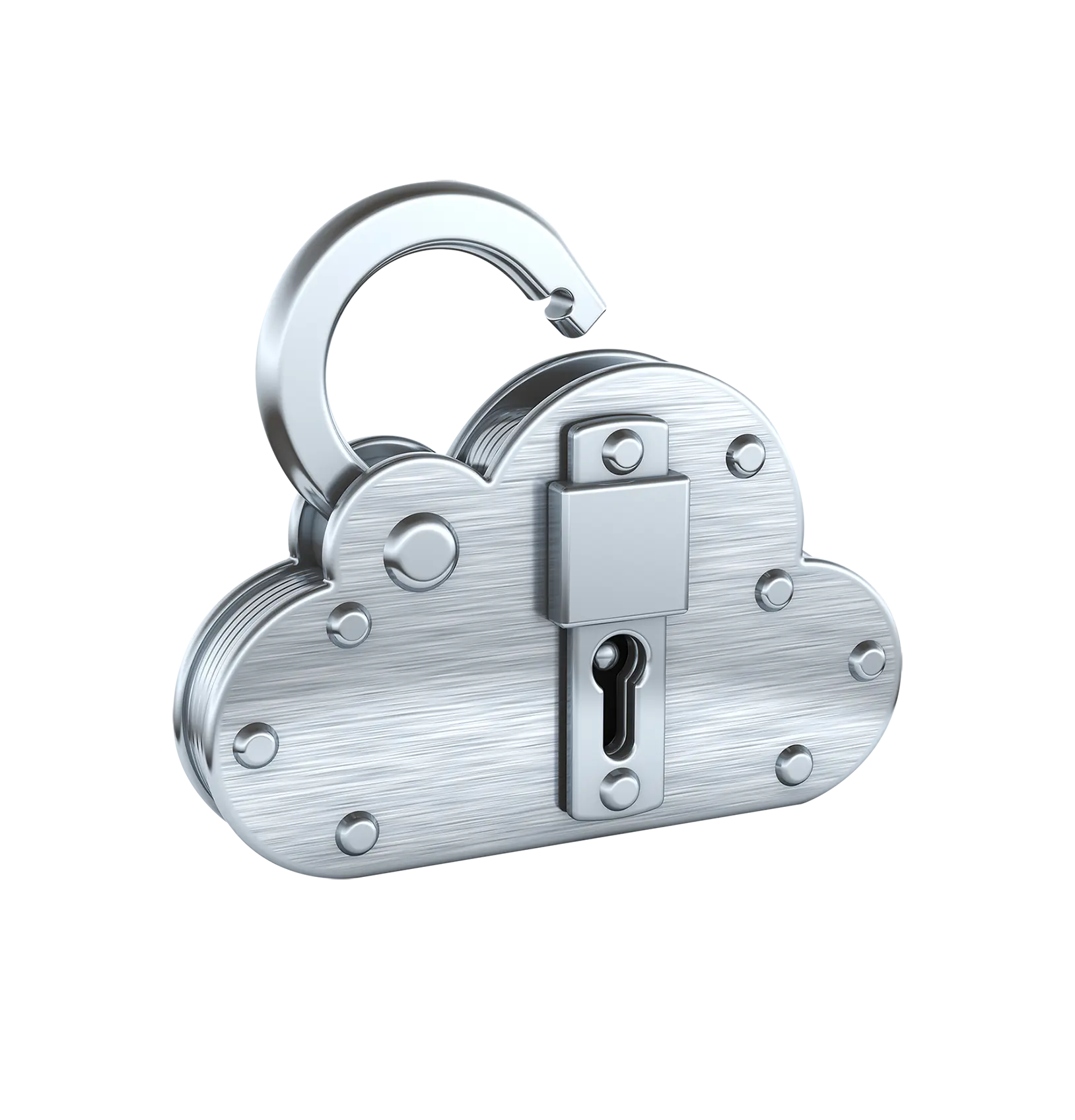Destacado en este post
The Manufacturing Trends That Demand Your Attention and How Your Business Can Tackle Them
The Manufacturing Trends That Demand Your Attention and How Your Business Can Tackle Them

We’ve all seen our fair share of short-lived products, sudden crazes and viral fads—here’s hoping that inflatable furniture, neon windbreakers and avocado bathroom suites aren’t set for comebacks.
But often those lists of hot trends that “everyone” needs to take notice of are actually just flashes in the pan that only certain manufacturing sectors can capitalize on. Of course, keeping your finger on the pulse of consumer trends in your industry is critical, but equally important are the manufacturing trends that are shaping the future of all industries.
That’s why we’ve collated this list of industry shifts that are changing the face of manufacturing, regardless of sector or vertical. We’ve also provided examples of strategies and manufacturing software systems that can help your business tackle these trends and ensure you come out on top.
Don’t forget: In the first part of this series, we explored how to solve the evergreen manufacturing challenges that all sectors are facing—from inventory management struggles to schedule attainment problems. Together, these two blogs can help you address your challenges, today and tomorrow.
1. Digital Transformation (DX)
The buzz about this trend has been around a while now, and it’s not going anywhere. Digital transformation—defined as leveraging digital technologies to optimize business operations and boost performance—is not only imperative to survive, but also key to thriving in your crowded and competitive market.
With worldwide digital transformation spending set to reach 3.4 trillion U.S. dollars by 2026, the practice has clearly become widespread among businesses, and that includes your competitors, who you could fall behind should you fail to act. And yet, many manufacturers are still only in the early stages of their digital transformation strategies, with less than half identifying their progress as mature or sophisticated.
No matter what industry you’re in, the benefits of digital transformation are significant, with the promise of reduced costs; enhanced customer service and satisfaction; happier and more productive staff; and, ultimately, increased profitability. What’s more, you’ll find that by tackling this trend proactively, you’ve got a head start in your response to others in this list, with advanced technology providing solutions for many current trends in manufacturing.
Tackling the Digital Transformation Trend
DX is not a “one and done” initiative, so it’s important to make a thorough plan for your digital transformation journey. To start, you’ll want to decide if your core solution, which for most manufacturers is a comprehensive enterprise resource planning (ERP) system, is up to the task. If not, upgrading or replacing your legacy system is critical to digital transformation success.
Then, once you’ve got a solid foundation to build upon, consider which complementary manufacturing software systems your business needs—these may include product lifecycle management (PLM), overall equipment efficiency (OEE) and enterprise asset management (EAM) software. You’ll also want to look beyond software to see how you can incorporate emerging technologies like artificial intelligence (AI), robotics, blockchain and augmented reality.
Whatever digital technologies you’re considering to advance your business, don’t forget to focus on two guiding principles:
Cloud-based software – The cloud is a central pillar to good digital transformation and allows you to future-proof your tech stack, improve accessibility, enhance security and scale more easily.
Industry-specific solutions – Whether you’re in food and beverage, fashion and apparel, discrete manufacturing, cosmetics or any other manufacturing vertical, choosing solutions designed for your unique challenges can offer additional benefits and boost return on investment (ROI).
To proactively respond to this manufacturing trend and plan your digital transformation strategy, check out our step-by-step guide: Embarking on Your Digital Transformation Journey: 8 Steps to Mission Success
2. Skilled Labor Shortages
Another manufacturing trend that has been plaguing the industry for the past few years, but is becoming even more pressing is the growing labor and skill shortage.
A Manufacturing Institute study revealed that in the U.S. alone, 2.1 million jobs could go unfilled by 2030, with the cost of those vacancies estimated to reach 1 trillion U.S. dollars. The reasons for these shortages are numerous—from lingering effects of the pandemic to the changing employment criteria of younger generations—but the bottom line is this is a global issue with no quick industry-wide fix, so you’ll need to take the necessary steps to insulate your business from its effects.
As you’ll know, if your business is understaffed, productivity and efficiency quickly become compromised, stoppages on your lines become more frequent, and quality issues can arise—all of which impacts customer satisfaction and your bottom line. To counteract deficiencies, many businesses are pouring money into overtime and bonus incentives, but there are more efficient ways to tackle the talent shortage. Let’s take a look.
Tackling the Labor Shortage Trend
For your business to conquer manufacturing labor shortages, you’ll need to address the following three focus areas.
Attracting new staff: Whether it’s offering compelling benefits, attractive remuneration or hybrid working models, it’s important to make your job posting stand out from the competition. It’s also a good idea to refresh your approach to recruitment. For example, maybe you can collaborate with local education institutions, provide specialized training programs or solicit feedback from candidates that dropped out of the interview process to help improve your results. With all manufacturing businesses facing the same troubles, it’s time to innovate.
Retaining current employees: When it’s so difficult to recruit new talent, ensuring your current staff are happy and fulfilled in their roles is crucial. But how? Some surefire ways to promote job satisfaction and retain employees include fostering an inspiring and inclusive company culture; allowing flexibility in responsibilities; providing opportunities for training and promotion; and finally, removing or reducing frustrating or tedious tasks from their day-to-day activities. Which leads us nicely into the final focus area.
Maximizing existing resources: Thankfully, your digital transformation strategy can help save the day here by streamlining processes, introducing automations and maximizing utilization of all your business assets. Deploying the right software can empower your team to focus on vital tasks by automating data entry, order processing, reporting and other time-consuming activities. Plus, adopting robotics and AI can save you time and labor throughout your operation.
To dive deeper into the specific tactics needed in each of these three focus areas, read our blog: Mitigate the Effects of the Global Talent Shortage With These Key Strategies
3. Supply Chain Disruptions
The manufacturing industry has had a volatile few years of supply chain disruption. Between post-pandemic issues, geopolitical pressures, raw material shortages, natural disasters and logistics delays, it’s felt like one thing after another. Unfortunately, with the global supply chain as complex as it now is and more challenges looming ahead, it’s not yet time for us to put this trend behind us.
The consequences of neglecting supply chain resilience and operational agility can be grave for your business. Whether it’s through production stoppages, fulfilment delays, quality issues, a lack of agility to capitalize on emerging trends or increased costs from finding alternative suppliers and expediting shipping, not fortifying your business against supply chain disruptions means two things: disgruntled customers and lost revenue.
So, how do you protect your manufacturing business from supply chain volatility?
Tackling the Disrupted Supply Chain Trend
To build an agile manufacturing business, you’ll need to implement a variety of tactics. For example, you can look at diversifying and building strong, yet flexible relationships with both your suppliers and distribution partners. In addition, you may want to investigate reshoring or near-sourcing more of your materials, as well as building capacity and inventory buffers to find a cost-effective middle ground between just-in-time and just-in-case strategies.
While all of these steps could make a difference for your operation, the real key to developing robust supply chain resilience is leveraging the right manufacturing technology. A number of software solutions can help on this front as you progress through your digital transformation—increasing efficiency, agility and supply chain visibility.
For example, an industry-specific ERP solution provides end-to-end transparency and traceability throughout your supply chain, while integrating with Internet of Things (IoT) devices to streamline and automate inventory management.
Meanwhile, choosing integrated electronic data interchange (EDI) drives efficiency and collaboration with your supply chain partners, and transportation management system (TMS) tools can provide real-time distribution visibility while reducing costs.
4. Demand for Sustainability
Many legislative bodies across the world are implementing or considering additional sustainability-related regulations spanning carbon neutrality, packaging reporting, supply chain transparency, deforestation reduction, clean water safeguarding and biodiversity protection.
What’s more, consumers are increasingly opting for more sustainable products and supporting environmentally conscious companies—in fact, 84% of customers say that poor environmental practices will alienate them from a brand or company.
The effects of this trend in manufacturing will be felt in every aspect of your business—from procurement, where you’ll need to select materials and source responsibly, to production and distribution, where processes must be adapted to minimize emissions and energy usage. In short, you must prioritize robust environmental, social and governance (ESG) programs and set clear sustainability goals to maintain regulatory compliance, satisfy customers and do your part to protect our environment.
Tackling the Sustainability Trend
Here are just a few of the many sustainable practices that your business can put into place to tackle this manufacturing trend:
Select environmentally friendly raw materials: Depending on your industry, these may include alternatives to plastics, non-traditional fabrics or food ingredient substitutes—both for your products and packaging. And don’t forget, these types of changes can help satisfy consumer desires for more sustainable products and thus increase the appeal of your offerings.
Source materials sustainably: This can be achieved by sourcing materials closer to your facilities to reduce carbon emissions along the supply chain and selecting your suppliers based on their sustainability credentials. That can include growers that use emergent farming techniques like hydroponics or vertical farming, producers that are embracing alternative energy sources or those that are committed to avoiding deforestation.
Reduce waste: In industries where materials have expiration dates, such as food and beverage or cosmetics, an ERP system can help you avoid spoilage with watertight inventory management and automate quality checks to reduce the need to scrap products. Some companies are also turning by-products into new materials (a practice known as upcycling), so looking into ways to repurpose or reuse the waste you do produce is another good option.
Optimize production processes: Choosing the right software systems—such as ERP, EDI, OEE and EAM—can help you avoid wasting energy and resources in your processes, whether that’s by eliminating paperwork, automating processes and increasing asset utilization.
Cut carbon emissions in distribution: With the transportation industry contributing 28% of total greenhouse gas emissions in the U.S. alone, making some key changes here can have a big impact. Route optimization software helps you cut carbon emissions by driving fewer miles, optimizing backhaul opportunities and making more environmentally friendly strategic choices about your distribution operation.
5. Rising Cost of Doing Business
You can almost always point to high operational costs as a manufacturing challenge, but recently a perfect storm of factors has seen costs soar, meaning that businesses like yours must control current expenses and safeguard against future volatility.
So, what’s driven the recent rise in cost of doing business? Firstly, spikes in inflation prompted increases in prices, including those for energy and raw materials. Simultaneously, a variety of material and parts shortages caused prices to surge, and transportation and shipping costs continued their upward trajectory. Plus, many of the above manufacturing trends have contributed to higher expenses, such as increases in labor costs to combat shortages and additional investments made to implement sustainability measures.
While statistics suggest prices are beginning to stabilize, they remain high, and further volatility cannot be ruled out. It’s therefore prudent to implement cost-saving measures to protect profitability, gain a competitive advantage and future-proof your manufacturing business.
Tackling the Increasing Manufacturing Costs Trend
There are a number of approaches you can take to reduce manufacturing costs, from implementing lean manufacturing methods and reformulating food products to implementing energy efficiency measures in your facilities and renegotiating supplier contracts. But, by far the easiest way to operate more efficiently is by accelerating your digital transformation and deploying the right manufacturing software systems.
ERP: Automates key processes and reduces reliance on time-consuming manual methods, speeding up operations and optimizing workforce productivity. ERP systems also improve supply chain visibility and optimize inventory management so you can improve efficiency, spot problems quickly and reduce waste.
EAM: Helps you maximize uptime on your production line by enabling preventive maintenance, maximizing asset utilization, streamlining work order management and automating repetitive tasks such as parts ordering and inventory restocking.
PLM: Can be configured with your specified parameters to create the most affordable product while adhering to the brief, while also boosting collaboration within new product development teams to optimize productivity. In addition, advanced PLM software with vendor portals allow you to shop for the best material prices and easily negotiate with suppliers for favorable terms.
Route optimization software: Creates cost-effective delivery schedules in minutes that reduce mileage, fuel consumption and driver overtime costs. Cutting truck miles also means you save on maintenance costs over time as vehicles are subject to less wear and tear, and with a reduction in planning time, you can redeploy staff to higher value tasks.
6. Increasing Customer Expectations
As we mentioned at the beginning of this blog, specific consumer trends are usually only applicable to individual verticals, but it’s worth noting that customers in general are developing more exacting requirements—particularly when it comes to speed and convenience.
Driven by the boom in eCommerce and direct-to-consumer (D2C) models, consumers have come to expect simple ordering, responsive customer service, speedy fulfillment and a variety of delivery options that suit them—and that’s on top of a high quality and competitively priced product.
And even though the catalyst for these expectations was the evolution of consumer-focused models, those buyers are increasingly bringing their adjusted requirements into their working environments, meaning even B2B businesses are now experiencing pressure to provide elevated services.
Tackling the Rising Customer Requirements Trend
So, what can you do to ensure you’re satisfying these enhanced expectations without sacrificing operational efficiency? The answer is simple: build a strong manufacturing software ecosystem.
No matter what products you’re producing or who your customers are, combining an advanced manufacturing ERP with a robust OEE system helps you accurately forecast demand, streamline production planning and optimize schedule attainment—so you can reliably fill customer orders quickly and efficiently. In addition, using a payment processing platform and EDI software can help streamline communication with your customers and suppliers, facilitating quicker and easier interactions with your business.
Transportation solutions can also deliver enhanced customer experiences, whether it’s for B2C or B2B businesses. Home delivery software allows customers to choose delivery time slots that suit them at point of sale, while ensuring that your schedules remain optimized and cost-effective. Plus, proof of delivery software simplifies and modernizes on-site encounters and can provide automated customer communications—improving service without requiring extra staff resources.
Conquer Manufacturing Trends With Specialized Software
While we’re discussing trends, you’ll have noticed a common thread in how you can respond to each of these issues: manufacturing software. We all know that technology plays a critical role in today’s world, and your operation is no different, but with your competitors all forging ahead with their own digital transformation strategies, you can’t just pick any old system off the shelf and expect the best results. It must be the right software, from the right vendor.
That’s where Aptean comes in.
We offer a full suite of industry-specific manufacturing software with specialized functionality to solve your unique challenges straight out of the box. So whether you’re producing cosmetics, food and beverage products, electronics, apparel, fabricated metals or something else entirely, we have the solutions you need to address these manufacturing industry trends and accelerate the growth of your business.
Moreover, we combine our advanced software with a by-your-side approach to implementation and support. Our experienced in-house teams will be there with your every step of the way, offering best practice advice and helping deliver real-world value for your business. Because we’re your partner, not just a vendor.
But you don’t have to take our word for it—read some of our customer success stories or get in touch today to discuss your software needs and arrange a personalized demo to see for yourself how our systems can improve your operations.
¿Todo listo para transformar tu negocio?
Tenemos el software especializado en tu sector que ayudará a tu organización a prosperar.



 April Matthews | Digital Marketing Lead SEO Specialist
April Matthews | Digital Marketing Lead SEO Specialist